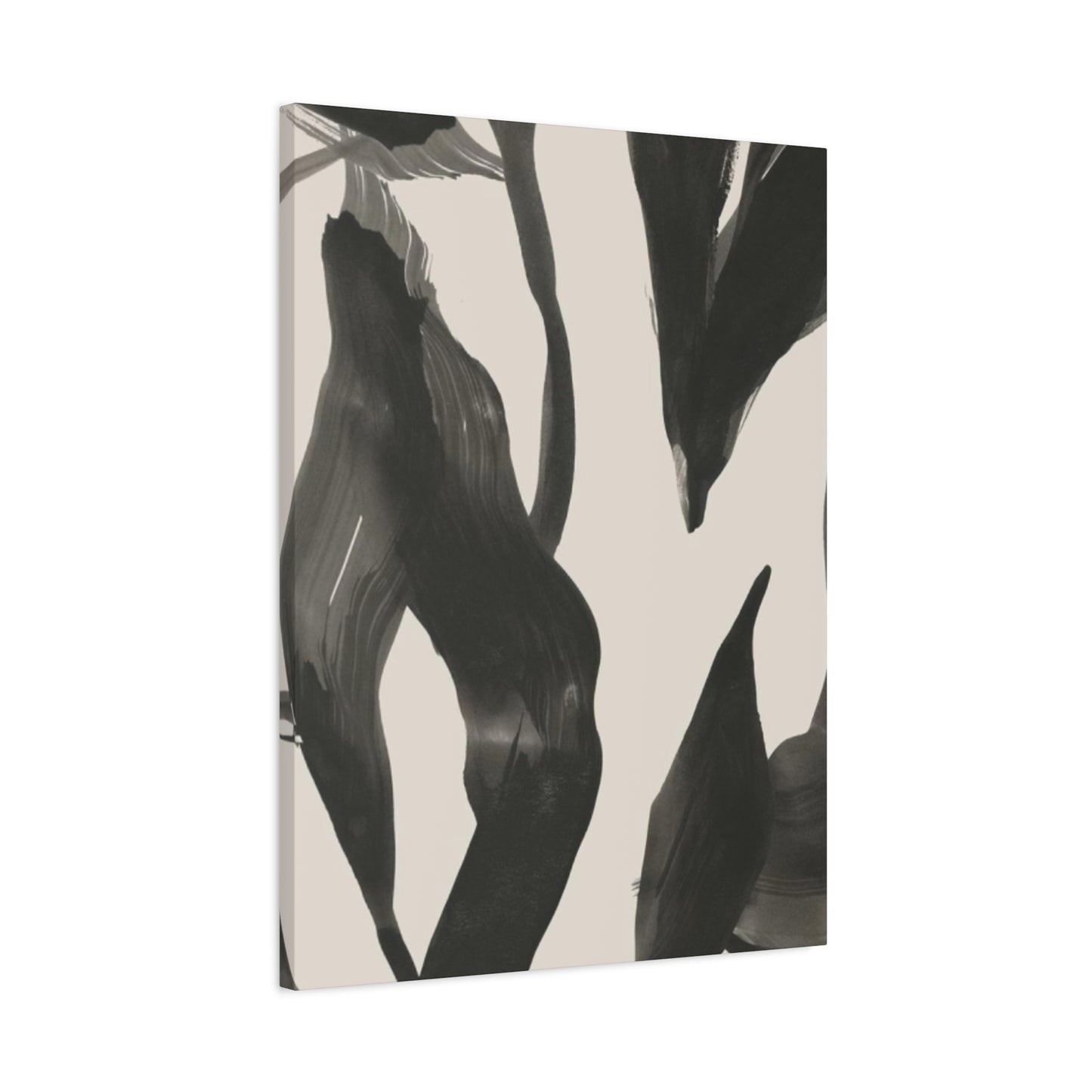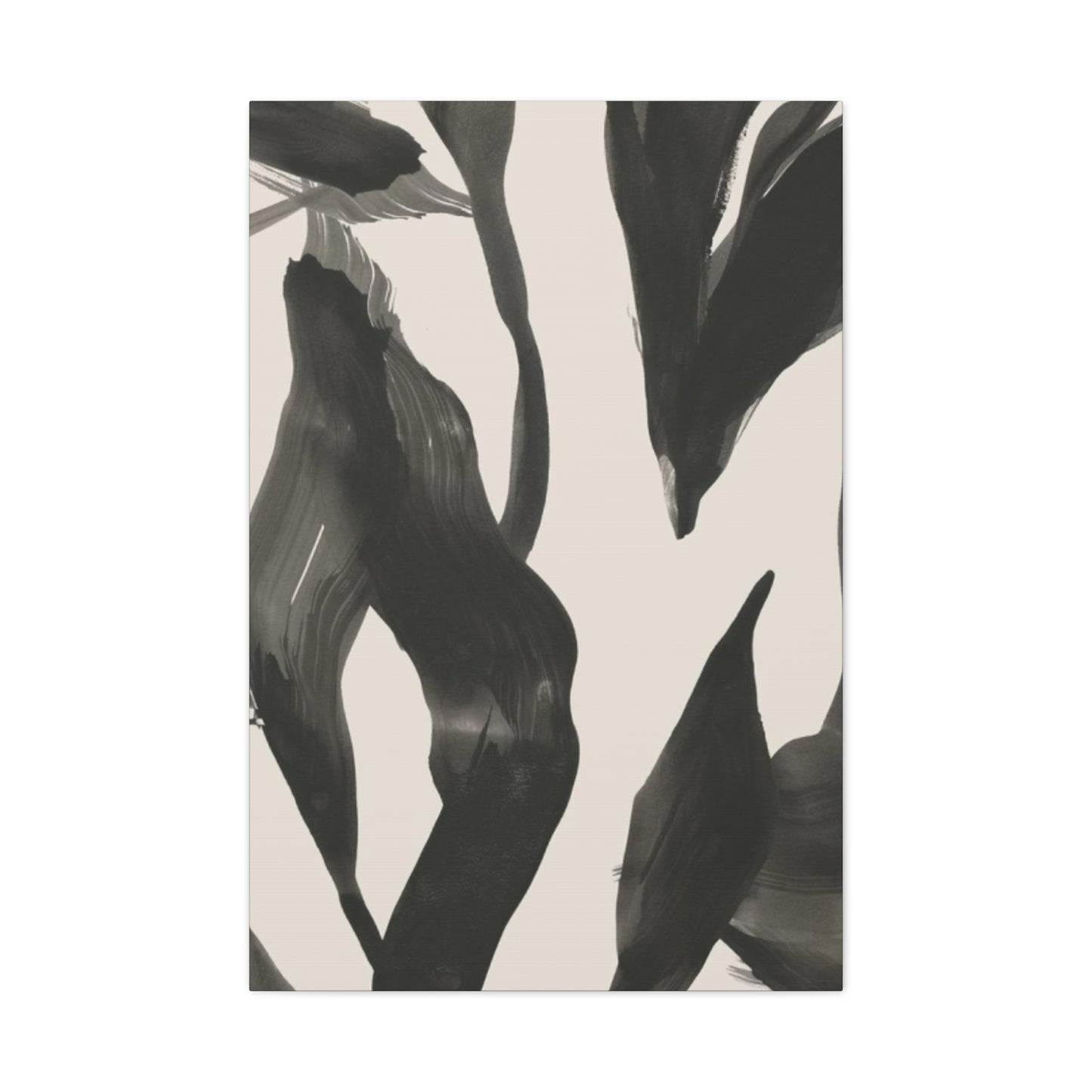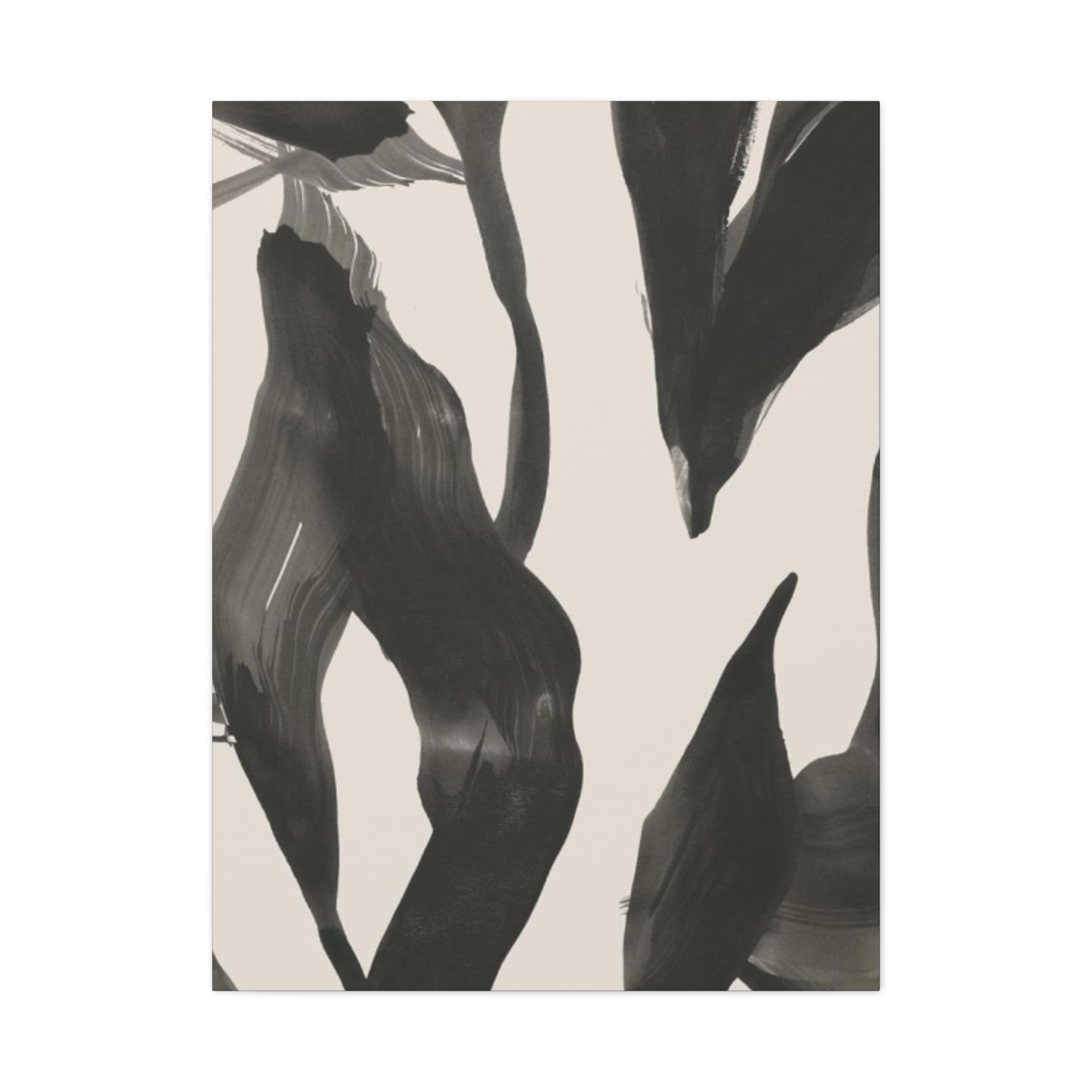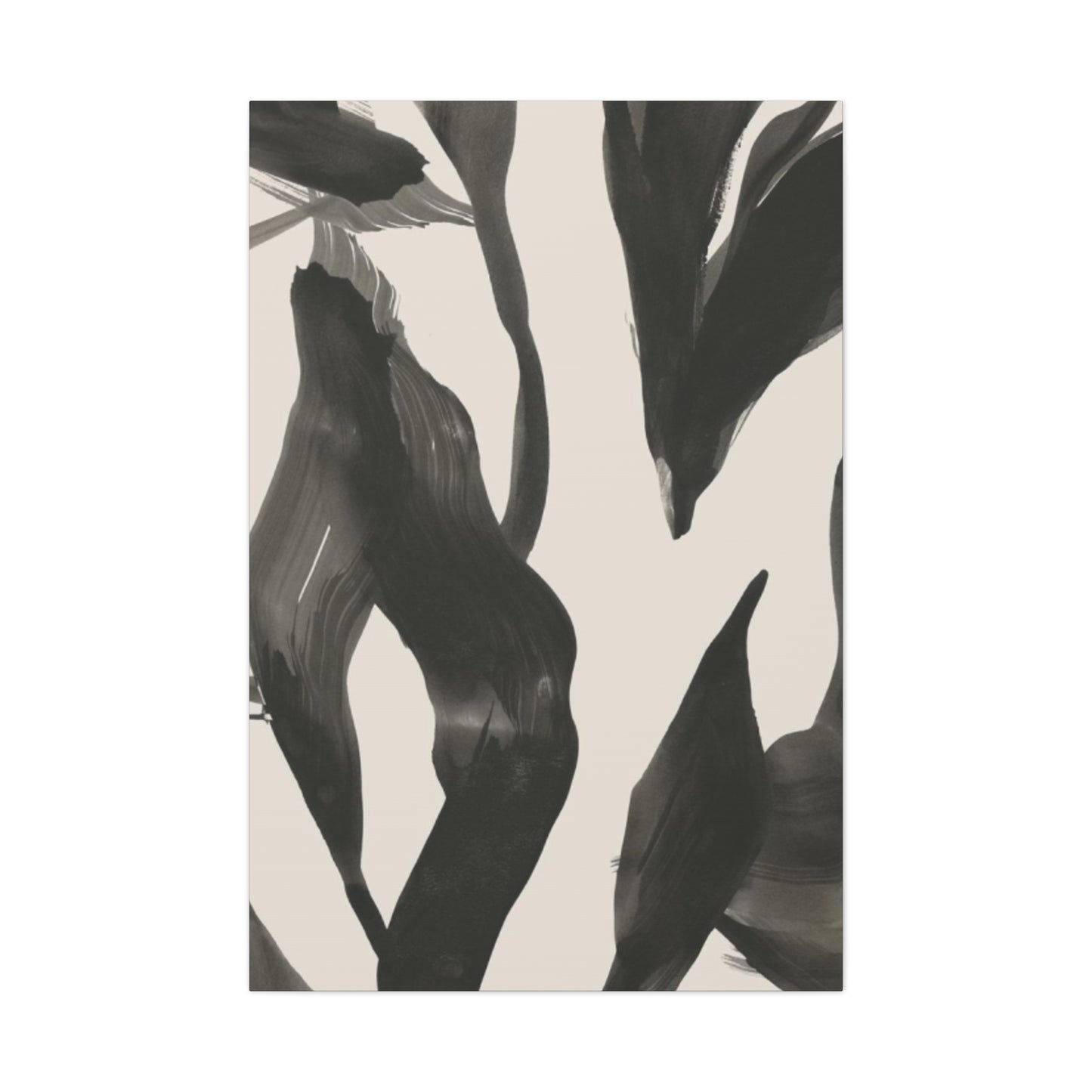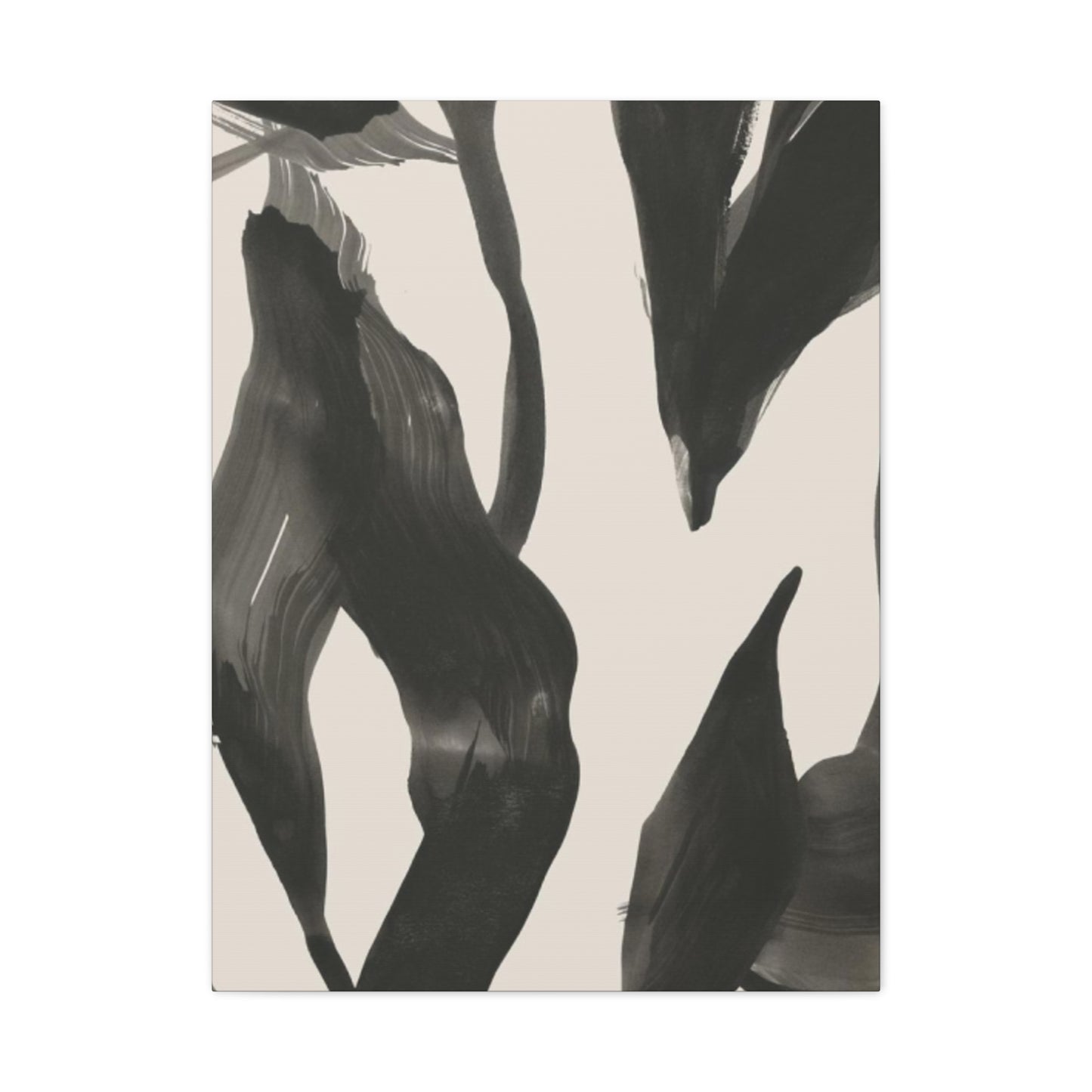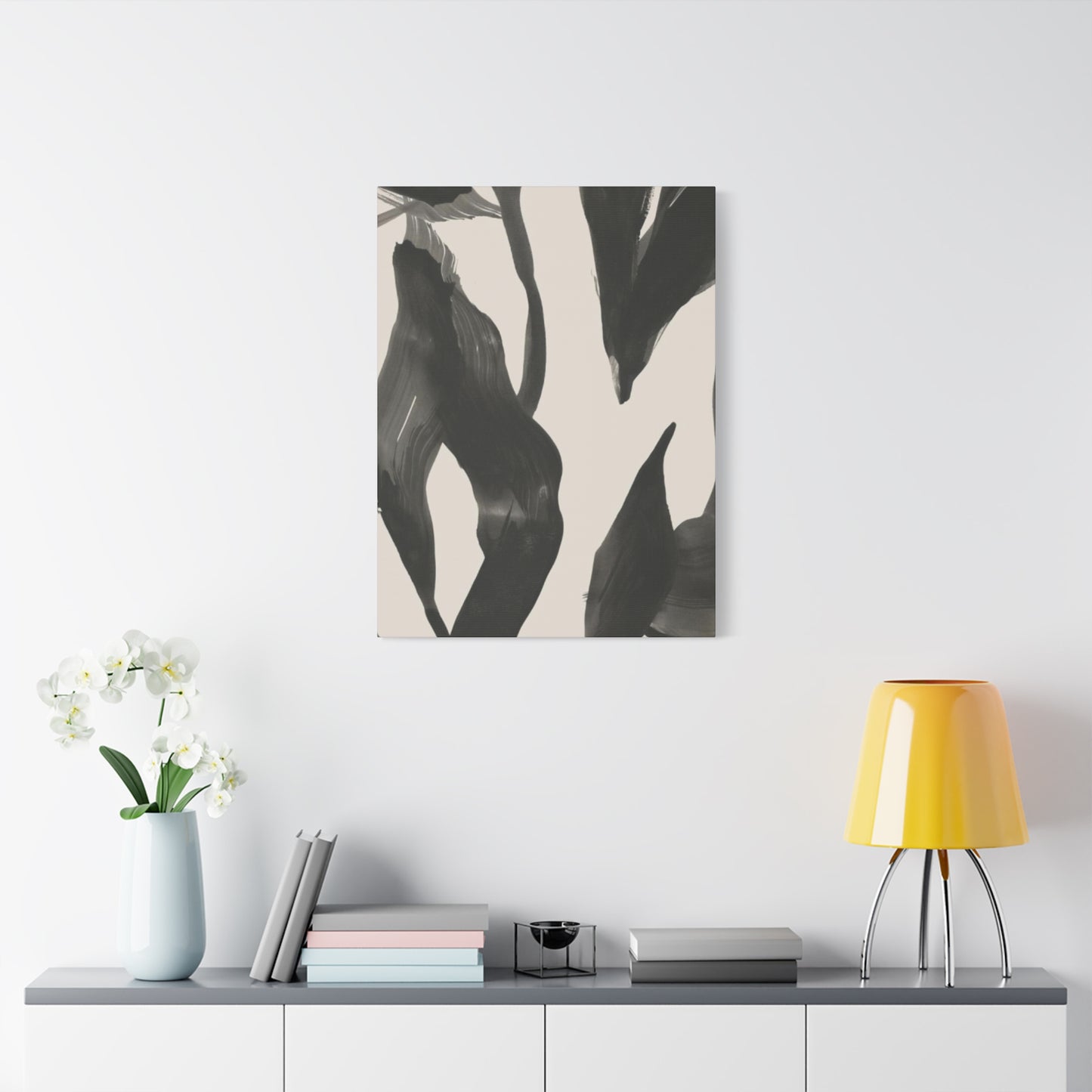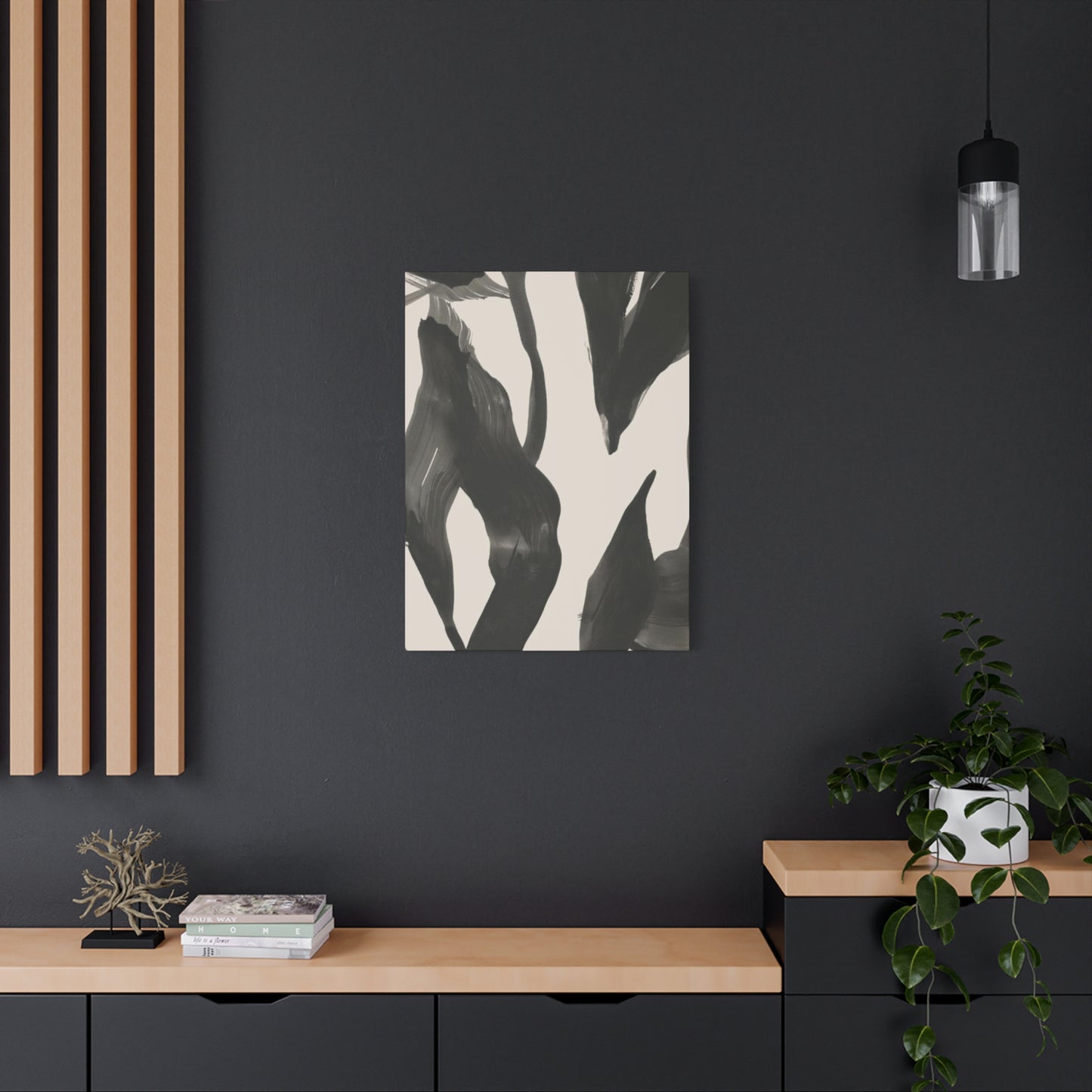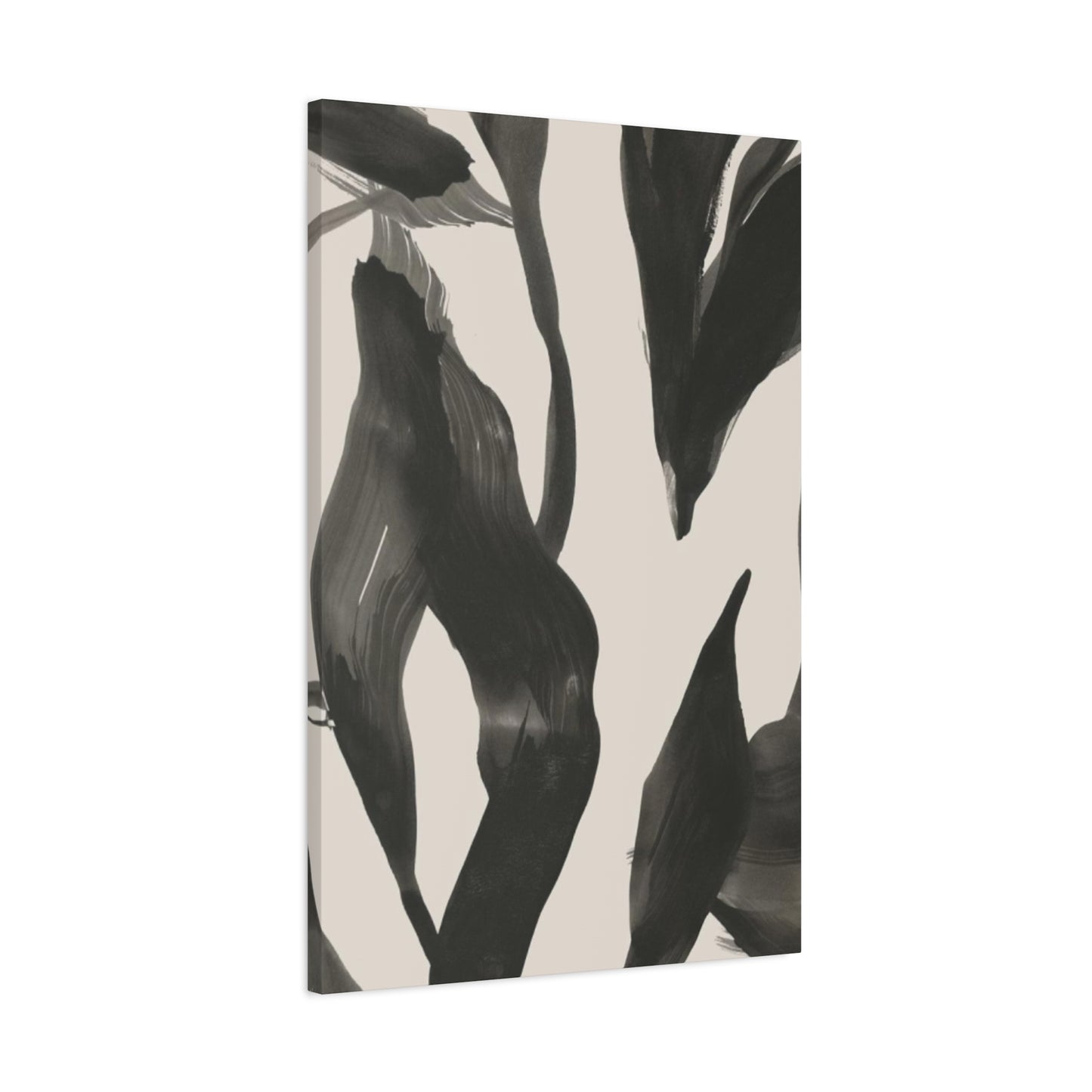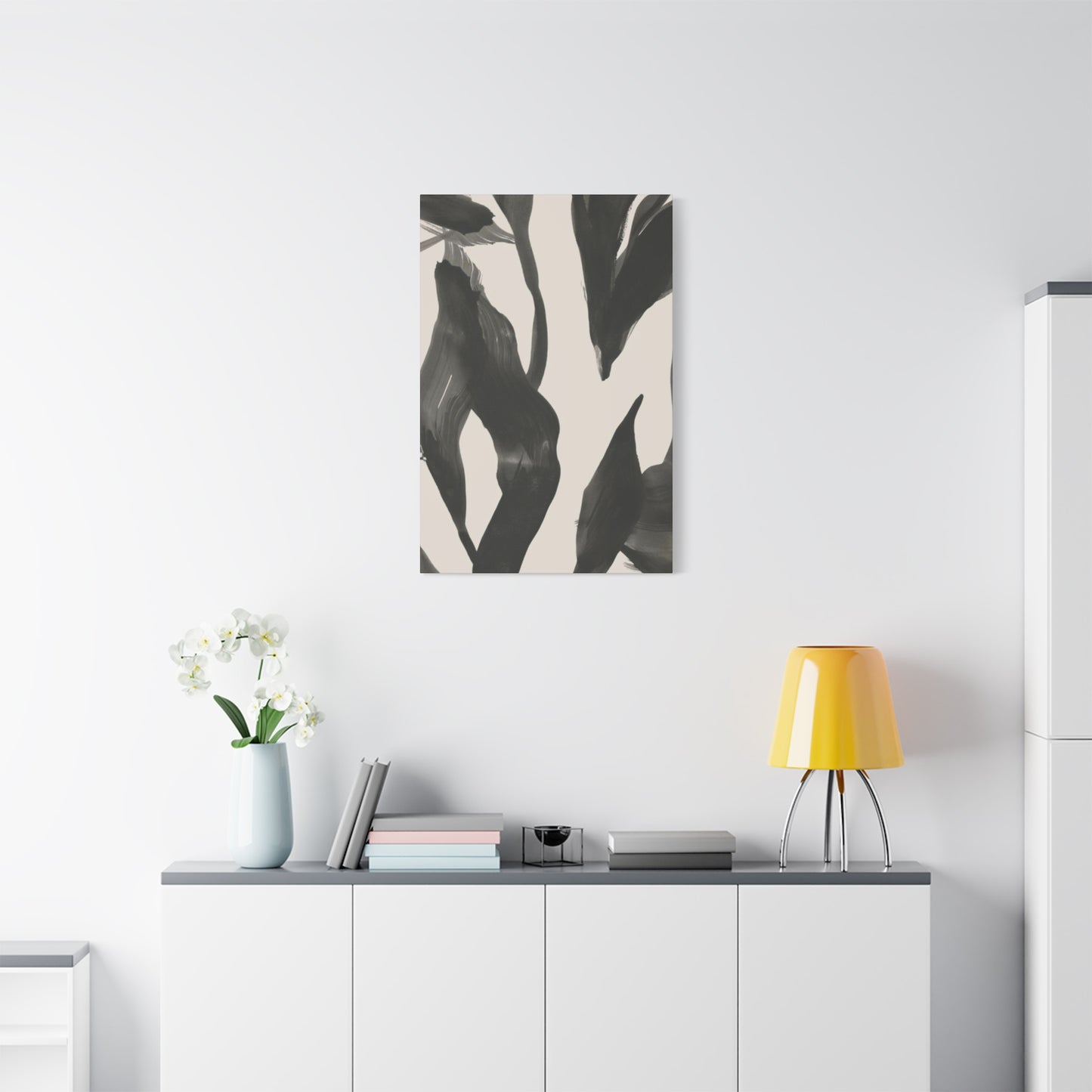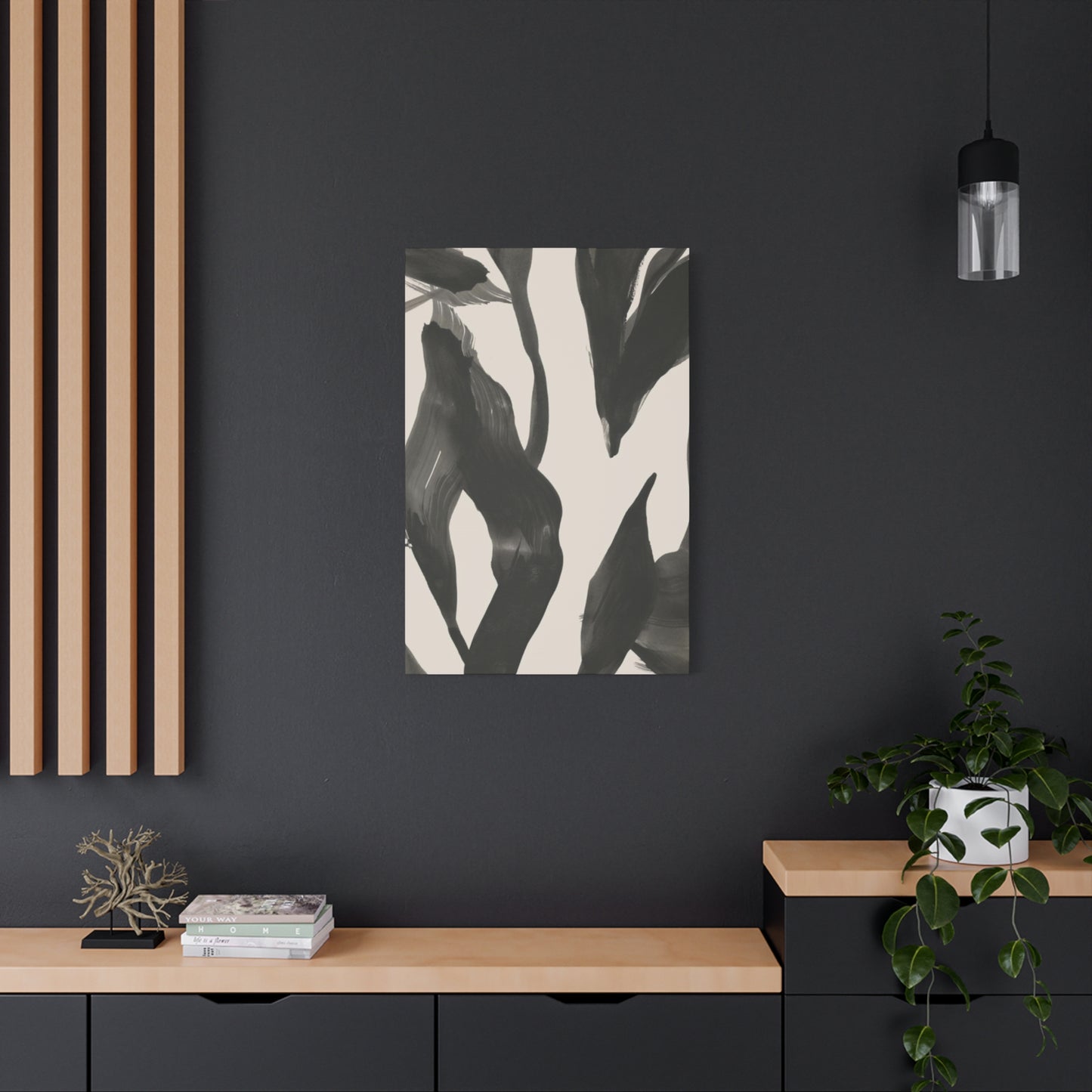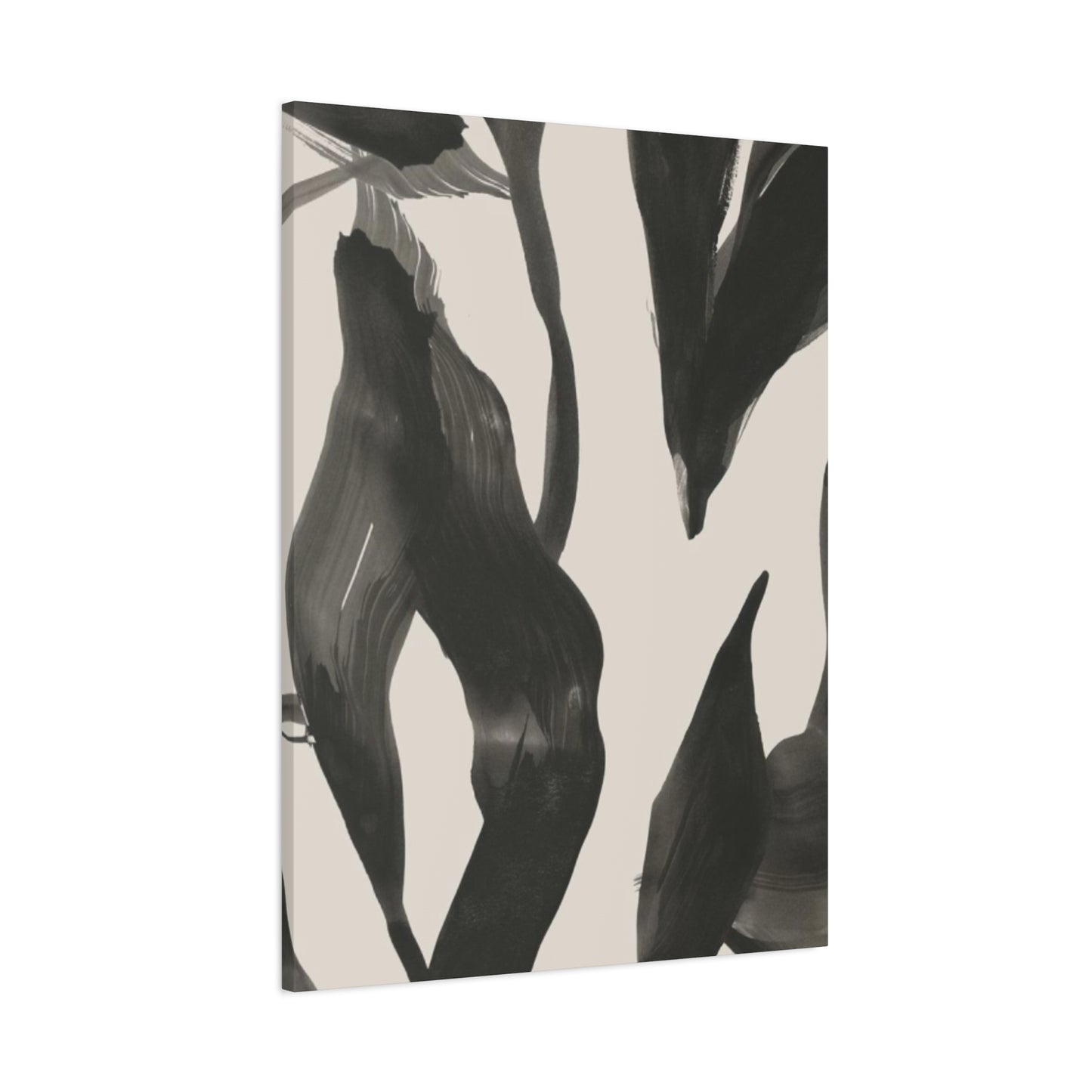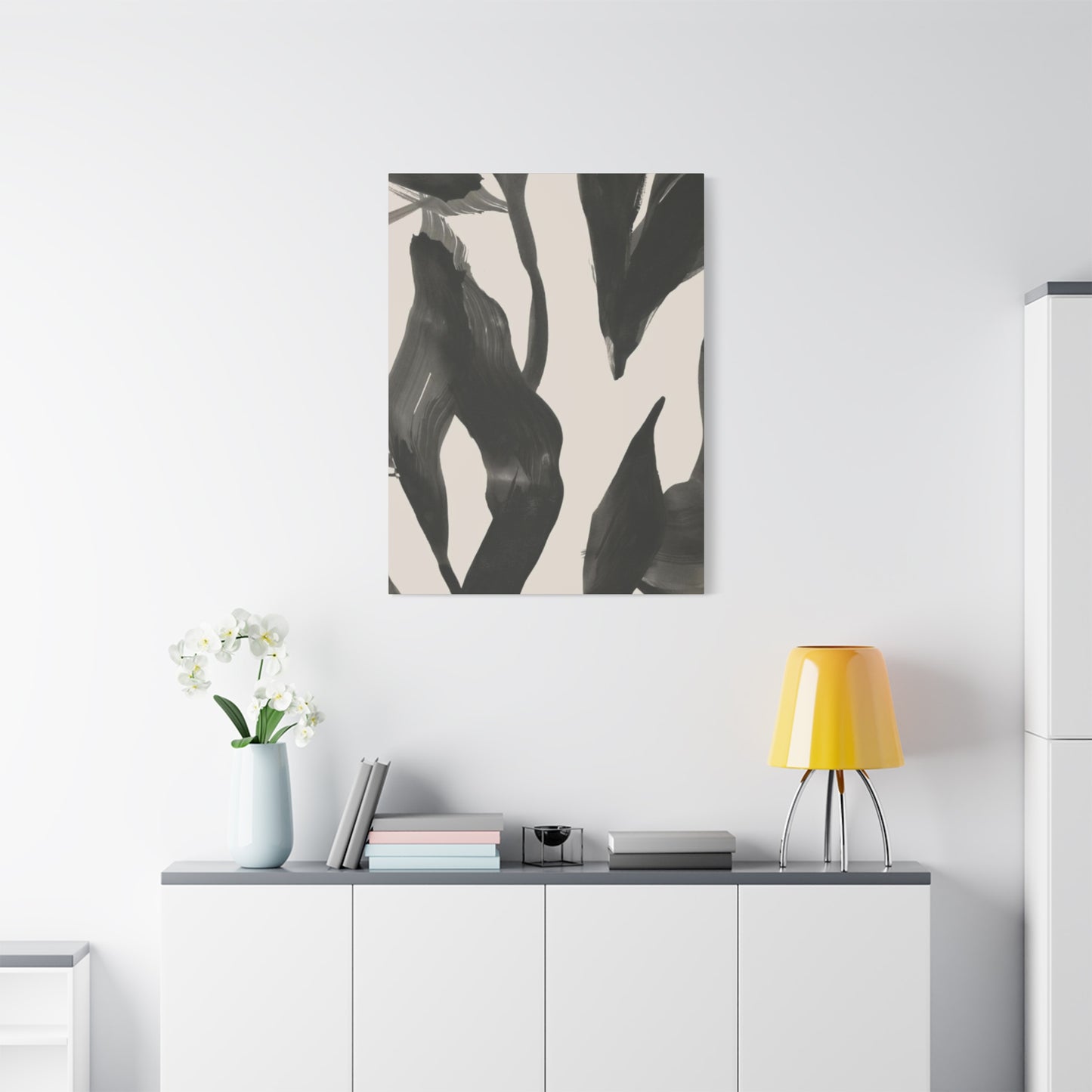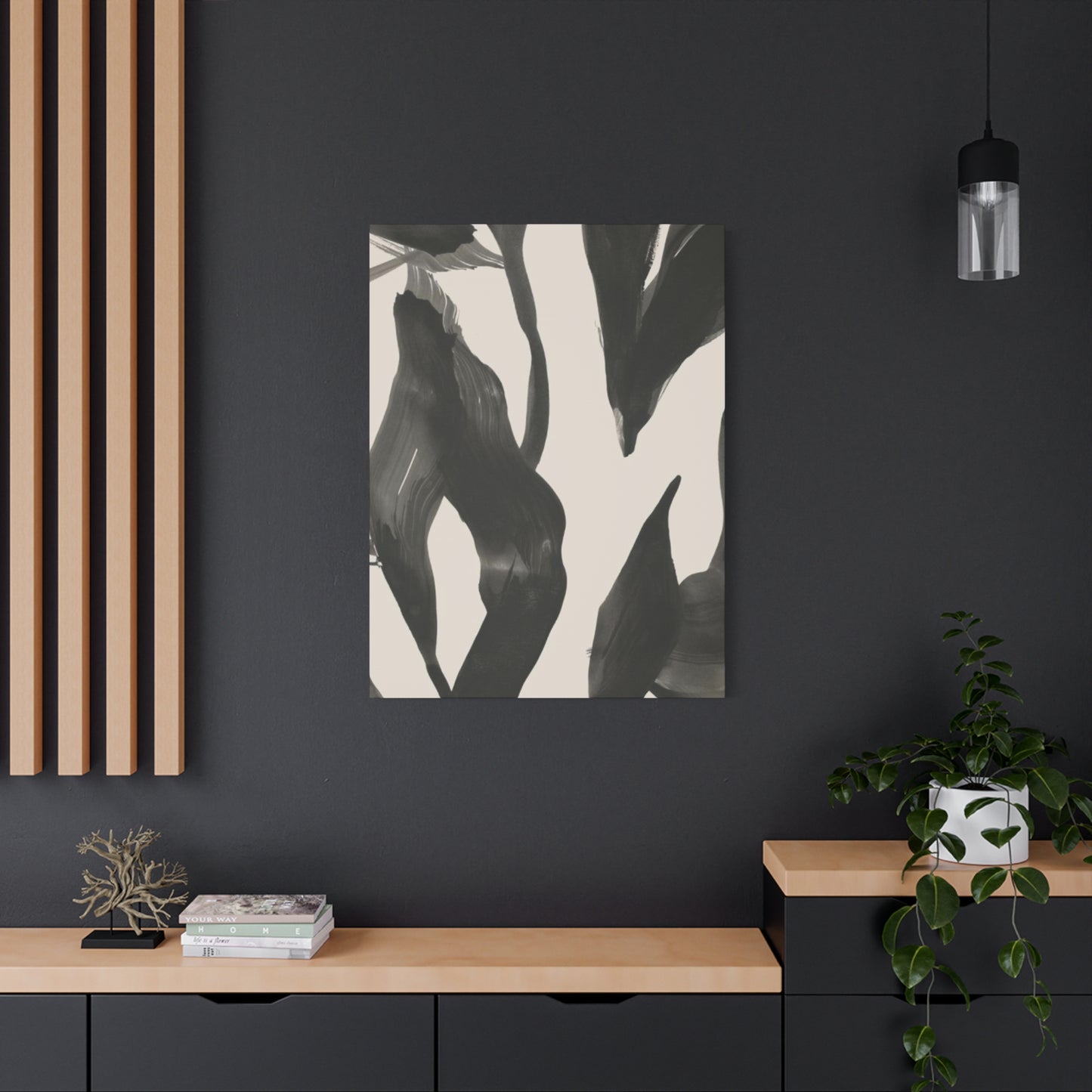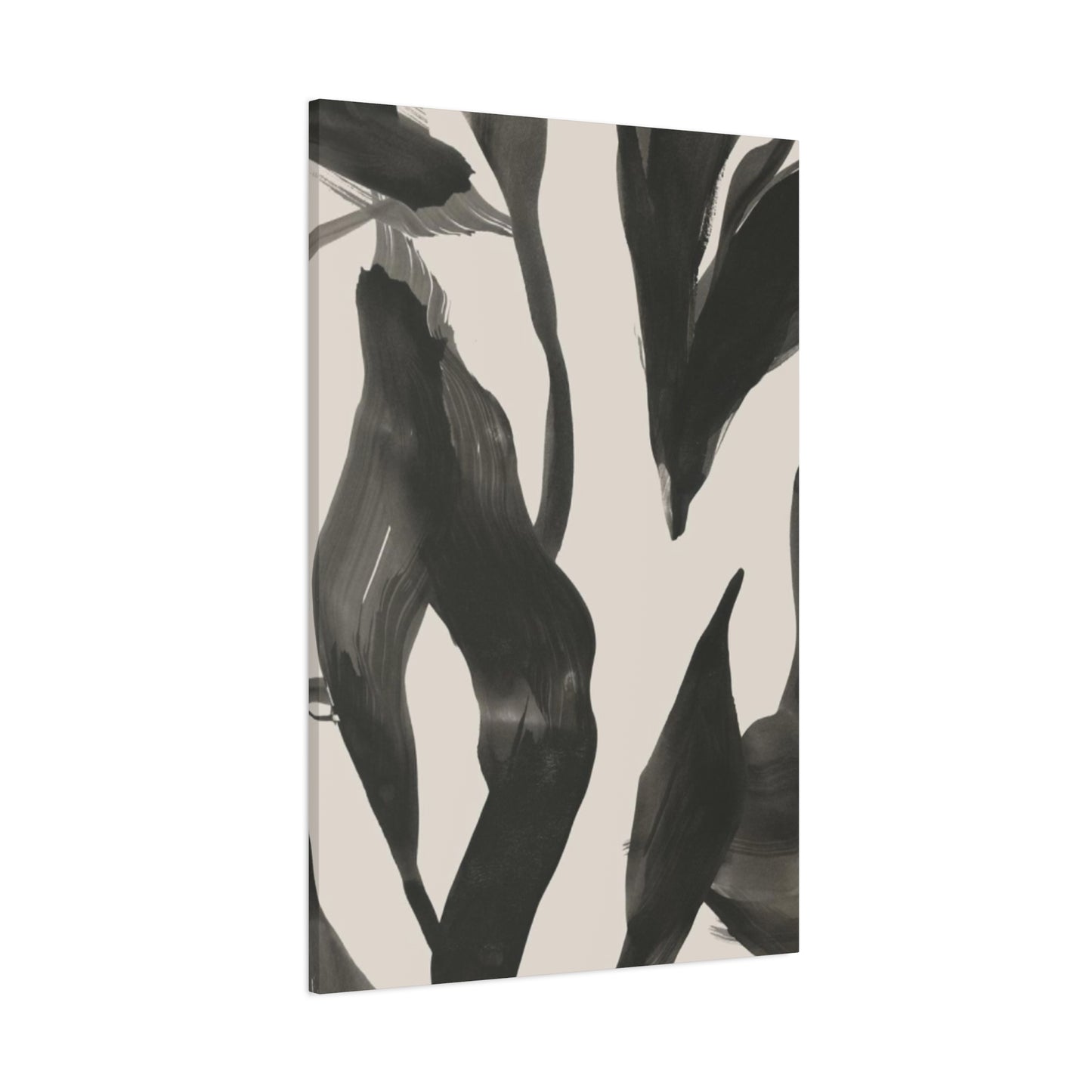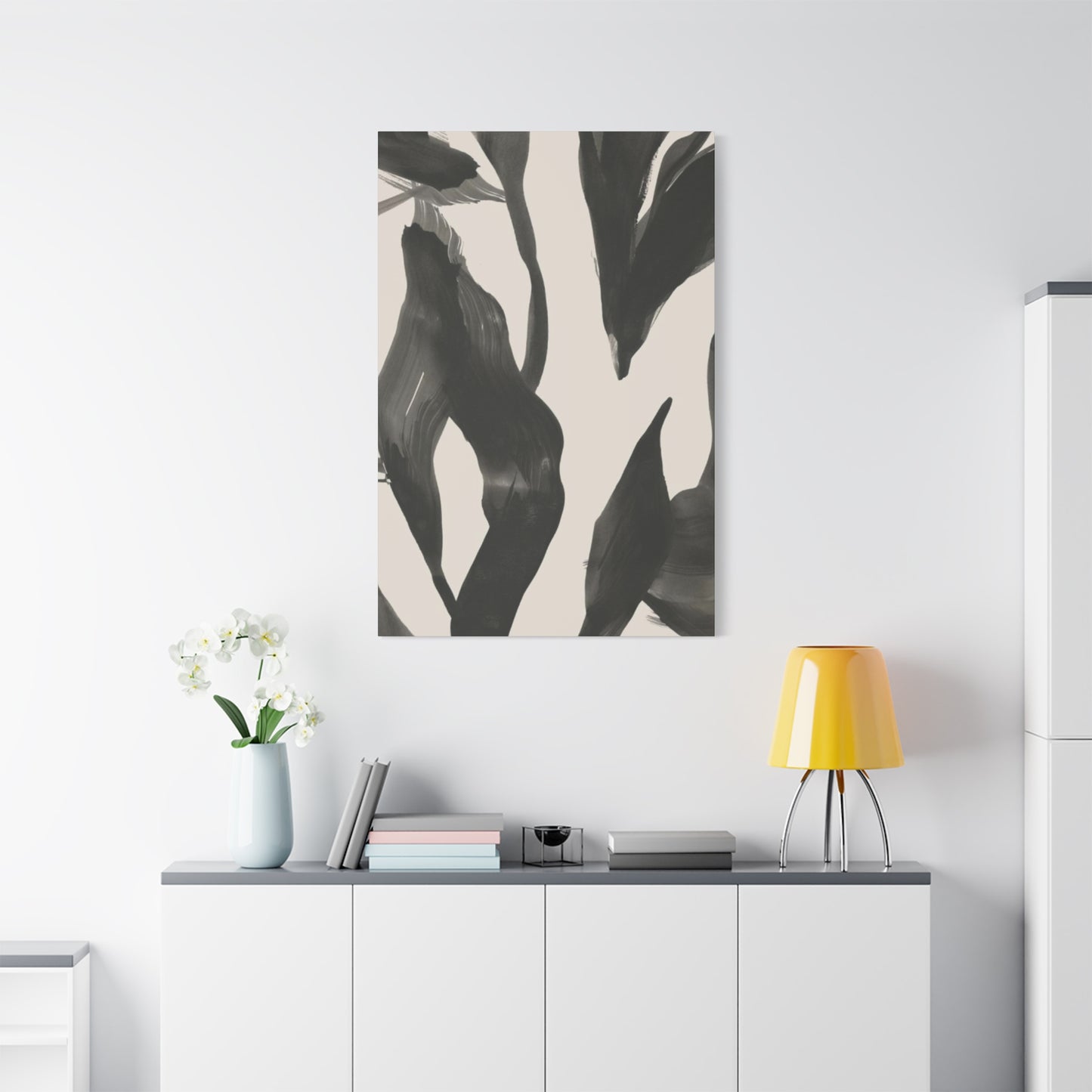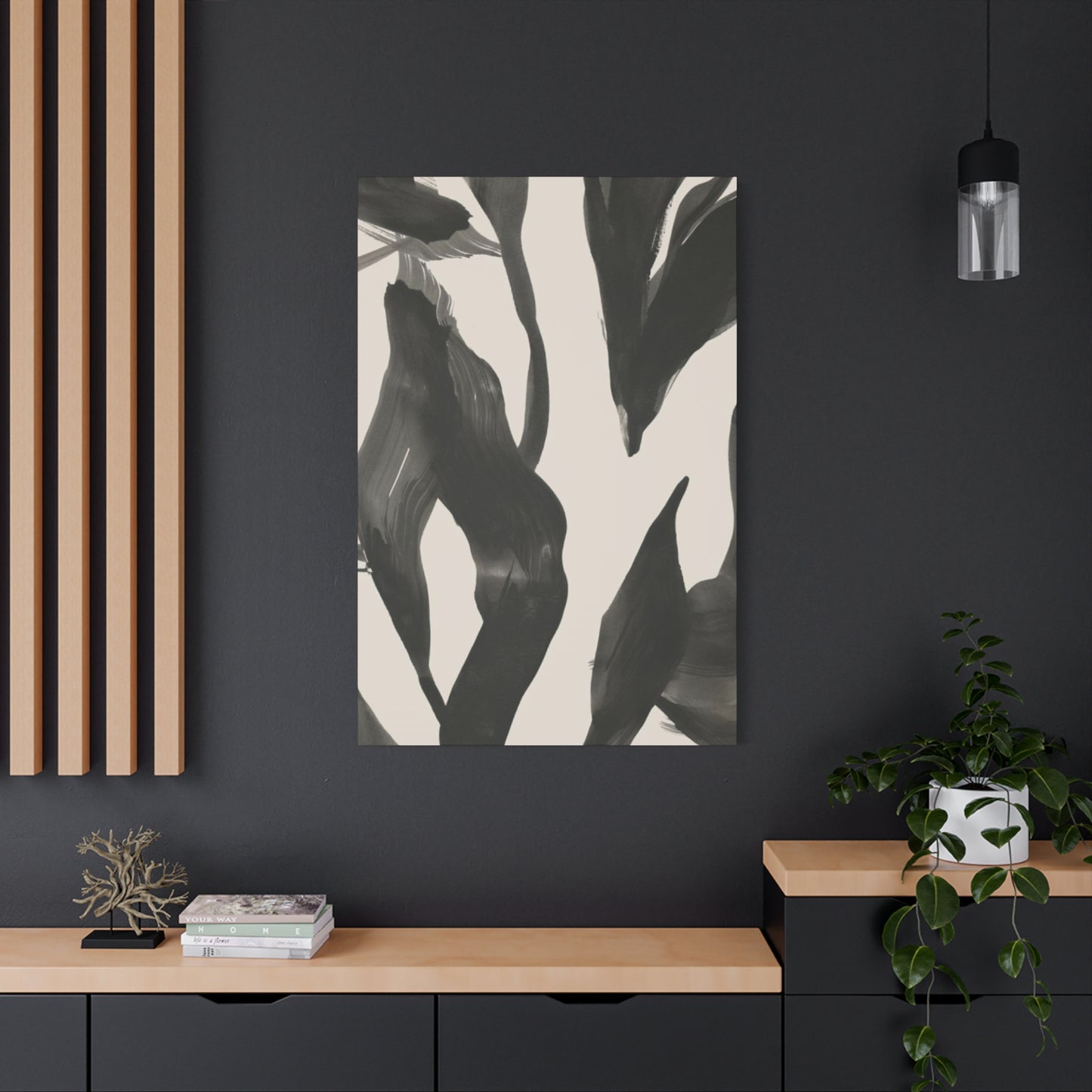Understanding Zebra-Inspired Modern Abstract Wall Art: Styling Tips and Design Inspiration
Interior design enthusiasts and art collectors are constantly searching for distinctive pieces that can transform ordinary spaces into extraordinary environments. Among the most captivating trends in contemporary home decoration, zebra-inspired abstract wall art has emerged as a powerful statement that combines natural beauty with modern aesthetics. This comprehensive guide explores every aspect of incorporating these striking pieces into your living spaces, offering insights into various styles, design approaches, and practical considerations for selecting the perfect artwork that resonates with your personal taste and complements your interior design vision.
The fusion of wildlife-inspired patterns with contemporary artistic expression creates a unique visual language that speaks to both nature lovers and modernist design enthusiasts. These artistic creations go beyond simple animal prints, transforming the recognizable striped pattern into sophisticated abstract compositions that capture attention and spark conversation. Whether you're furnishing a minimalist apartment, designing a corporate office, or adding character to a spacious family home, these artistic pieces offer versatility and impact that few other decorative elements can match.
Throughout this extensive exploration, we'll delve into the various manifestations of this artistic style, examining how different approaches to pattern, color, composition, and scale can dramatically alter the mood and atmosphere of your space. From bold graphic interpretations to subtle minimalist expressions, the world of zebra-inspired modern art offers something for every aesthetic preference and interior design scheme.
Zebra Pattern Abstract Modernism Wall Art
The intersection of natural patterns and modernist artistic philosophy creates a fascinating category of wall art that challenges traditional boundaries between representation and abstraction. This style takes the instantly recognizable striped pattern found in nature and reimagines it through the lens of contemporary artistic movements, resulting in pieces that are simultaneously familiar and refreshingly innovative.
Modernism in art emphasizes clean lines, geometric precision, and a departure from literal representation. When applied to zebra-inspired patterns, this approach transforms organic curves into architectural elements, creating compositions that feel both structured and dynamic. Artists working in this style often deconstruct the natural pattern, isolating individual elements and recombining them in unexpected ways that challenge our perceptual expectations.
The beauty of this artistic approach lies in its ability to evoke the energy and movement associated with wildlife while maintaining the sophisticated restraint valued in contemporary design. These pieces work exceptionally well in spaces that embrace modernist principles, complementing furniture with clean lines, open floor plans, and neutral color palettes. The contrast between the dynamic pattern and minimalist surroundings creates visual interest without overwhelming the space.
Color plays a crucial role in these compositions, with many artists exploring variations beyond the traditional black and white palette. Some introduce metallic accents like gold or silver, adding luxury and refinement to the design. Others experiment with subtle gradations of gray, creating depth and dimension through tonal variation rather than stark contrast. These color choices allow the artwork to adapt to different interior color schemes while maintaining its distinctive character.
Texture considerations also distinguish high-quality pieces in this category. Some artists incorporate mixed media elements, layering paint, ink, and other materials to create tactile surfaces that reward close inspection. Others embrace the smooth, pristine finish of digital printing on canvas, allowing the pure pattern to take center stage without textural distraction. The choice between these approaches depends on the overall aesthetic you wish to achieve and how the piece will interact with other elements in your space.
Scale represents another critical consideration when selecting these pieces. Large-format works make dramatic focal points in spacious rooms, commanding attention and establishing the visual hierarchy of the space. Smaller pieces work beautifully in gallery wall arrangements or as accent pieces that add interest to specific areas without dominating the entire room. Understanding how scale affects visual impact helps in making selections that perfectly suit your specific spatial requirements.
The placement of these artworks requires thoughtful consideration of lighting conditions. Natural light interacts beautifully with high-contrast patterns, creating shifting shadow effects throughout the day that add another dimension to the viewing experience. Artificial lighting should be positioned to minimize glare while highlighting the texture and detail of the piece. Directional lighting can emphasize specific aspects of the composition, drawing attention to particularly compelling areas of the design.
These pieces also offer psychological benefits that extend beyond pure aesthetics. The dynamic energy of the striped pattern can invigorate a space, creating an atmosphere of vitality and movement. At the same time, the structured nature of the geometric elements provides a sense of order and calm. This duality makes these artworks particularly suitable for environments where you want to balance energy with tranquility, such as creative workspaces or contemporary living areas.
Modern Zebra Canvas Prints
Canvas prints have revolutionized the accessibility and versatility of high-quality wall art, and modern zebra designs have fully embraced this medium to deliver stunning visual impact at various price points. The canvas format offers unique advantages that make it ideal for displaying bold patterns and contemporary designs, from the texture of the fabric to the gallery-wrapped presentation that eliminates the need for traditional framing.
The quality of canvas prints has evolved dramatically in recent years, with advances in printing technology allowing for exceptional color accuracy, detail reproduction, and longevity. Museum-grade archival inks resist fading from light exposure and environmental factors, ensuring that your investment maintains its visual appeal for decades. The canvas material itself adds subtle texture that enhances the organic quality of the pattern, creating a more authentic artistic experience than smooth photographic paper could provide.
One of the most appealing aspects of canvas prints is their versatility in presentation options. Gallery-wrapped canvases extend the image around the sides of the stretcher bars, creating a finished appearance that looks complete without a frame. This presentation style works exceptionally well with contemporary interiors, where clean lines and minimal ornamentation are valued. Alternatively, some collectors prefer framed canvas prints, which add a formal boundary to the composition and can help integrate the piece with more traditional decorative schemes.
Size options for canvas prints span an impressive range, from compact pieces suitable for small apartments to massive multi-panel installations that can cover entire walls. Triptych and polyptych arrangements allow for particularly dramatic presentations, where a single pattern flows across multiple canvases, creating rhythm and movement that draws the eye across the composition. These multi-panel arrangements work beautifully above sofas, beds, or in dining areas where horizontal space is available.
The production process for high-quality canvas prints involves careful attention to color management and printing parameters. Reputable producers use color-calibrated monitors and printers to ensure accurate reproduction of the original artwork. They also use sufficient ink density to create rich blacks and clean whites, which are essential for high-contrast patterns. The stretching and mounting process affects the final appearance significantly, with proper tension ensuring a smooth, drum-tight surface free from wrinkles or distortion.
Caring for canvas prints requires minimal effort, making them practical choices for busy households. Regular dusting with a soft, dry cloth keeps the surface clean, while occasional careful vacuuming with a brush attachment removes accumulated dust from the texture. Canvas prints should be displayed away from direct sunlight when possible, though modern archival inks offer excellent fade resistance even in bright conditions. Avoiding high-humidity environments helps prevent potential issues with canvas tension and ink stability.
The affordability of quality canvas prints has democratized access to sophisticated wall art, allowing design enthusiasts at all budget levels to incorporate striking visual statements into their spaces. Print-on-demand technologies mean that even limited production runs of unique designs can be offered at reasonable prices, giving consumers access to exclusive patterns and compositions that would have been prohibitively expensive in traditional fine art mediums.
Customization options for canvas prints have expanded considerably, with many producers offering choices in canvas texture, finish, and depth. Some prefer the traditional matte finish that minimizes reflections and maintains focus on the pattern itself. Others appreciate satin finishes that add subtle sheen, enhancing perceived depth and richness. The depth of the stretcher bars affects how prominently the piece projects from the wall, with thicker options creating a more substantial, sculptural presence.
Environmental considerations have also influenced canvas print production, with many manufacturers now offering eco-friendly options including sustainably sourced wood for stretcher bars, water-based inks, and canvas materials made from organic or recycled fibers. These choices allow environmentally conscious consumers to enjoy beautiful art while minimizing their ecological footprint.
Abstract Black and White Wall Decor
The timeless combination of black and white in abstract art continues to captivate designers and homeowners alike, offering a sophisticated palette that transcends temporary trends while providing maximum visual impact. This classic color scheme possesses an inherent elegance that works across virtually any interior style, from ultra-modern minimalist spaces to traditional rooms seeking contemporary accent pieces.
The power of black and white abstraction lies in its ability to focus attention on form, composition, and pattern without the distraction of color relationships. This reduction to essential elements creates a purity of expression that resonates with modernist design principles. The high contrast between these polar opposites creates immediate visual drama, ensuring that pieces in this palette naturally draw the eye and command attention within their environment.
Psychological research has demonstrated that black and white environments can promote focus and clarity of thought, making these pieces particularly suitable for workspaces, home offices, and study areas. The absence of color eliminates potential emotional associations tied to specific hues, creating a neutral backdrop that allows the mind to concentrate on tasks without subtle chromatic influences. However, the dynamic patterns inspired by natural forms prevent the starkness from becoming sterile or cold.
The versatility of black and white decor extends to its compatibility with virtually any color scheme. These pieces serve as perfect anchor points in rooms with bold, colorful furniture and accessories, providing visual rest and balance. Conversely, in monochromatic or neutral spaces, they add necessary contrast and interest without introducing color complexity. This adaptability makes them excellent investments for those who enjoy periodically refreshing their interior color palette.
Different artistic approaches to black and white abstraction create varied emotional impacts. Bold, graphic interpretations with sharp edges and strong contrast project confidence and energy, suitable for modern, dynamic spaces. Softer approaches featuring gradual transitions between tones create more contemplative, serene atmospheres appropriate for bedrooms, meditation spaces, or areas designated for relaxation. The particular balance of black to white within the composition also affects mood, with black-dominant pieces feeling more intimate and enclosed, while white-dominant designs appear more open and expansive.
Texture plays an amplified role in monochromatic work, as the absence of color shifts attention to surface qualities. Matte finishes absorb light, creating depth and richness in black areas while lending softness to white regions. Glossy or semi-gloss finishes introduce reflective qualities that add dimension and interest, with light playing across the surface in ways that change with viewer position and lighting conditions. Mixed finishes within a single piece create sophisticated interplay between absorption and reflection.
The historical precedent for black and white abstraction includes some of the most influential movements in modern art. From the stark geometries of De Stijl to the gestural expressionism of mid-century abstract painters, the black and white palette has been central to artistic innovation. Contemporary pieces drawing inspiration from natural patterns honor this tradition while introducing fresh perspectives and interpretations.
Zebra Stripe Modern Art
The distinctive striped pattern has transcended its biological origins to become a powerful design element in contemporary art, offering artists and designers a rich vocabulary of lines, rhythm, and movement. Modern interpretations of this pattern range from faithful representations to highly abstracted explorations that retain only the essential character of parallel, flowing lines.
The visual rhythm created by repeating stripes has a hypnotic quality that engages viewers on both conscious and subconscious levels. The eye naturally follows the flow of lines across the composition, creating a sense of movement and direction even in static images. Artists exploit this perceptual phenomenon to guide viewer attention, create focal points, and establish visual hierarchies within their compositions. The varying width, spacing, and curvature of stripes dramatically affect the energy and mood of the piece.
Optical effects inherent in striped patterns add another layer of interest to these works. When stripes are closely spaced or positioned at certain angles, they can create moiré patterns and subtle vibrations that animate the surface. Some artists embrace these optical phenomena, using them to add dynamism and visual complexity. Others carefully manage stripe properties to avoid these effects, preferring compositions that feel more stable and grounded. Both approaches have merit and appeal to different aesthetic sensibilities.
The directional quality of stripes offers powerful compositional tools. Vertical stripes tend to draw the eye upward, creating a sense of height and dignity. They work exceptionally well in rooms with lower ceilings, as they create the illusion of greater vertical space. Horizontal stripes emphasize width and can make narrow rooms feel more expansive. Diagonal stripes introduce energy and dynamism, suggesting movement and change. Curved stripes, most closely resembling natural patterns, add organic flow and grace to compositions.
Scale relationships between stripes and overall composition size create different visual experiences. Large, bold stripes make dramatic statements suitable for spacious rooms and high ceilings. They project confidence and work well in modern, minimalist environments where bold statements are valued. Finer, more delicate stripes create refined, sophisticated appearances appropriate for formal spaces or smaller rooms where subtlety is preferred. Mixed-scale compositions combining various stripe widths add complexity and visual interest.
The negative space between stripes deserves equal consideration to the stripes themselves. In successful compositions, both positive and negative elements work together to create balanced, harmonious designs. The proportions between stripes and spaces affect the overall tone, with wider spaces creating airy, open feelings and narrower gaps producing denser, more energetic compositions. Artists manipulate these relationships to achieve specific atmospheric effects.
Color variations within striped compositions expand creative possibilities beyond simple black and white interpretations. Monochromatic schemes using various tones of a single color create subtle sophistication. Complementary color pairings introduce vibrant contrast and energy. Analogous color schemes offer harmony and unity. The introduction of color adds emotional dimensions and allows pieces to coordinate with or complement specific interior color palettes while maintaining the essential striped structure.
Contemporary Zebra Pattern Wall Prints
Contemporary artistic interpretation of natural patterns brings fresh perspectives to familiar forms, and zebra-inspired wall prints exemplify this evolution. Today's artists and designers approach this iconic pattern with innovative techniques, materials, and conceptual frameworks that push beyond traditional wildlife art into territory that speaks to modern aesthetic sensibilities and conceptual interests.
Digital technologies have revolutionized how artists create and manipulate patterns, allowing for precise control over every aspect of the composition. Software tools enable seamless pattern repetition, color exploration, and scale adjustments that would be impractical with traditional media. This technological empowerment has led to hybrid approaches that combine hand-drawn elements with digital refinement, creating works that possess both organic authenticity and technical precision.
The contemporary art market increasingly values limited edition prints and exclusive designs that offer collectors uniqueness without the prohibitive cost of original paintings. Artists respond by creating numbered editions with certificates of authenticity, establishing provenance and value. Print-on-demand technologies allow for customization options while maintaining quality standards, giving consumers input into size, color variations, and presentation formats.
Sustainability considerations influence contemporary print production, with eco-conscious artists and manufacturers prioritizing environmentally responsible materials and processes. Recycled papers, sustainably sourced canvas materials, vegetable-based inks, and low-energy production methods appeal to environmentally aware consumers. Some artists explicitly incorporate sustainability into their artistic messaging, using natural patterns to comment on conservation and human relationships with wildlife.
Contemporary wall prints often blur boundaries between fine art and decoration, occupying a middle ground that makes high-quality design accessible to broader audiences. This democratization of art challenges traditional hierarchies while maintaining standards of aesthetic excellence. Pieces in this category offer the visual sophistication of gallery art while remaining approachable and suitable for residential settings.
The curation and presentation of contemporary prints have evolved beyond single-piece installations to include complex gallery wall arrangements. Multiple prints in related designs can be combined to create larger visual narratives or to fill expansive wall spaces with coordinated diversity. These arrangements allow for personal expression through selection and arrangement, making the installation itself a creative act that reflects individual taste and vision.
Marketing and distribution channels for contemporary wall prints have expanded dramatically through online platforms and social media. Artists can reach global audiences directly, while consumers benefit from unprecedented access to diverse styles and creators. Virtual room visualization tools allow potential buyers to preview artwork in their actual spaces using augmented reality, reducing uncertainty and increasing purchase confidence. This technological mediation of the art buying experience has transformed the relationship between creators and collectors.
Abstract Safari Canvas Art
The romantic allure of safari landscapes and wildlife has long captivated artists and viewers, and contemporary abstract interpretations bring new dimensions to this enduring fascination. Abstract safari art distills the essence of African plains and their iconic inhabitants into compositions that evoke atmosphere and emotion without literal representation, creating pieces that function as sophisticated contemporary art while maintaining connections to natural inspiration.
This artistic approach captures the expansive horizons, dramatic light, and dynamic energy of safari environments through color, form, and composition rather than detailed depiction. Warm earth tones evoke sun-baked landscapes, while bold contrasts suggest the interplay of harsh sunlight and deep shadows. The simplified forms and patterns reference wildlife without becoming zoological illustrations, maintaining the ambiguity and interpretive openness valued in abstract art.
The cultural resonance of safari imagery carries associations with adventure, exotic beauty, and connection to primal nature. These psychological undercurrents add depth to the viewing experience, engaging viewers on emotional levels that purely formal abstraction might not reach. This combination of aesthetic sophistication and emotional accessibility makes abstract safari art particularly appealing for residential settings where art should be both visually compelling and personally meaningful.
Color palettes in abstract safari compositions often draw from the rich, warm spectrum of African landscapes. Burnt oranges, deep ochres, warm browns, and sun-bleached golds create immediate atmospheric associations. When combined with the black and white contrast of animal patterns, these colors create sophisticated harmonic relationships that feel both grounded and elegant. Cool accent colors like sky blues or foliage greens provide refreshing counterpoints that enhance overall composition.
Texture plays an important role in conveying the tactile qualities of safari environments. Rough, heavily textured surfaces suggest arid earth, weathered vegetation, and the rugged character of wild landscapes. Smoother passages might evoke distant horizons, still water, or the sleek form of animals. Mixed media approaches incorporating actual earth, sand, or organic materials create authentic connections to landscape while adding sculptural dimension to two-dimensional compositions.
Abstract safari art works particularly well in specific interior contexts. Rooms with natural materials like wood, leather, and stone find harmonious partnerships with these pieces, creating cohesive environments that celebrate organic beauty. Neutral color schemes in modern interiors benefit from the warm earthiness these artworks introduce. Contemporary spaces with global or eclectic design sensibilities embrace the cultural associations without requiring literal ethnic or tribal motifs.
Geometric Zebra Pattern Art
The intersection of organic natural patterns and geometric artistic approaches creates compelling visual hybrids that speak to both our appreciation of natural beauty and our attraction to order and structure. Geometric interpretation of striped patterns involves analyzing, deconstructing, and reconstructing the natural form using the language of geometry, resulting in artwork that feels simultaneously familiar and innovatively abstract.
Geometric approaches emphasize mathematical precision, symmetry, and structured relationships between elements. When applied to naturally flowing patterns, this creates fascinating tension between organic inspiration and rigid execution. Artists might transform curved stripes into angular zigzags, translate flowing patterns into tessellated mosaics, or reduce complex forms to essential geometric primitives. These transformations highlight the underlying structure within apparent organic randomness.
The visual vocabulary of geometric art includes circles, triangles, squares, polygons, and their countless combinations and variations. Striped patterns can be fragmented into geometric segments, arranged in grid systems, or used as filling patterns within geometric shapes. These approaches create multiple levels of pattern, with the overall geometric structure containing the smaller-scale striped detail. This hierarchical organization adds complexity and visual interest while maintaining overall order.
Color blocking in geometric interpretations introduces additional structural dimension. Rather than continuous pattern flow, color changes can occur along geometric divisions, creating segmented appearances that emphasize structure over organic continuity. Bold color choices in geometric compositions create graphic impact suitable for modern, energetic spaces. More subdued palettes allow the structural innovation to take precedence over chromatic drama.
Symmetry and asymmetry in geometric compositions create different effects and associations. Perfect symmetry produces formal, dignified, stable feelings appropriate for traditional or formal spaces. Intentional asymmetry introduces dynamism and contemporary edge, suggesting movement and evolution. Many successful geometric pieces balance symmetrical and asymmetrical elements, creating tension between order and freedom that maintains visual interest.
Modern Animal Print Wall Art
Contemporary approaches to animal-inspired art have evolved far beyond the safari-themed prints of previous decades, embracing abstraction, pattern focus, and sophisticated design sensibilities that align with current aesthetic values. Modern animal print wall art maintains connections to natural inspiration while functioning as legitimate contemporary art suitable for design-conscious environments.
The shift toward abstraction and pattern emphasis allows these pieces to transcend literal wildlife representation while retaining visual interest and natural associations. This evolution makes animal-inspired art acceptable in contexts where traditional wildlife paintings would feel out of place. Contemporary interpretations focus on texture, pattern, color, and form rather than anatomical accuracy, creating works that function as design elements while maintaining biological roots.
The diversity of approaches within modern animal print art offers options for varied aesthetic preferences. Some artists embrace bold graphic simplification, reducing natural forms to essential shapes and patterns rendered in high contrast. Others explore subtle tonal variations and nuanced color relationships that create sophisticated, gallery-worthy pieces. Still others incorporate mixed media, texture, and experimental techniques that push boundaries of what animal-inspired art can be.
Pattern extraction and isolation represents a key strategy in contemporary animal art. By focusing on specific pattern elements like stripes, spots, or texture while eliminating contextual details, artists create abstract compositions that reference natural origins without depicting actual animals. This approach allows pattern beauty to be appreciated on its own terms while providing enough natural association to maintain warmth and accessibility.
Scale manipulation creates impact and transforms familiar patterns into fresh visual experiences. Extreme close-ups that fill the entire composition with small sections of pattern create immersive experiences that emphasize detail and texture. Wide views that show pattern in context create different relationships between figure and ground. Playing with expected scale relationships keeps work feeling innovative rather than derivative.
Color liberation from naturalistic representation opens creative possibilities while maintaining pattern recognition. Departing from expected black and white into unexpected color palettes personalizes work and allows coordination with specific interior schemes. These chromatic adventures can range from subtle near-monochrome variations to vibrant multi-color explorations. The key is maintaining the essential character and recognition of the pattern while exploring new chromatic territory.
Abstract Zebra Lines Canvas
The reduction of complex patterns to their most essential element, the line, creates opportunities for pure formal exploration that highlights rhythm, flow, movement, and the expressive potential of the simplest mark. Abstract zebra line art focuses on the stripe itself as a graphic element divorced from literal representation, allowing artists to manipulate, exaggerate, and reimagine these fundamental forms in countless ways.
Line quality profoundly affects the character and mood of compositions. Crisp, hard-edged lines create precision and graphic punch suitable for modern, minimalist environments. Soft, blurred edges introduce atmosphere and subtlety appropriate for more contemplative spaces. Textured, irregular lines add organic authenticity and visual interest. Artists select and control line quality to achieve specific aesthetic and emotional effects.
The spacing and rhythm of parallel lines create visual music that the eye follows across the composition. Regular, evenly spaced lines produce calm, orderly effects. Varied spacing creates dynamic rhythm and visual interest. Gradual transitions from dense to sparse spacing suggest depth and dimension. These rhythmic variations engage viewers perceptually, creating movement and directing attention even in static images.
Line direction and flow guide viewer attention and create compositional movement. Lines converging toward focal points concentrate interest and create depth. Radiating lines expand energy outward. Swirling, curved lines create rotation and dynamic flow. Straight lines emphasize stability and structure. Thoughtful manipulation of line direction creates sophisticated compositions that guide the viewing experience.
Black and White Modern Wall Art
The enduring appeal of monochromatic art in contemporary design stems from its sophistication, versatility, and the timeless quality of eschewing color trends. Black and white modern wall art offers maximum impact through contrast, form, and composition while coordinating effortlessly with any interior color scheme. This classic palette continues to dominate contemporary art markets and residential design projects.
The absence of color in black and white work shifts emphasis to formal elements including line, shape, texture, pattern, and composition. This reduction to essentials aligns with modernist principles while creating clarity and focus. Without chromatic complexity, compositions must succeed through strength of form and quality of execution. This discipline often results in more powerful, essential expressions than multi-colored alternatives.
Contrast ratios between black and white areas dramatically affect mood and energy. High contrast with pure black against pure white creates bold, graphic impact suitable for dynamic, modern spaces. Introducing gray tones softens contrast and creates more nuanced, contemplative atmospheres. The full tonal range from deep black through grays to bright white offers subtle modeling and dimension impossible with strict two-tone approaches.
Psychological associations with black and white carry cultural weight and emotional resonance. Black suggests sophistication, power, mystery, and depth. White conveys purity, simplicity, clarity, and openness. The interplay between these opposing qualities creates visual and conceptual tension that engages viewers. Different balances between black and white create distinct atmospheres that influence how spaces feel and function.
The practical advantages of monochromatic art extend beyond aesthetics to functional considerations. Black and white pieces never clash with evolving interior color schemes, making them lasting investments that remain relevant through multiple design refreshes. They coordinate seamlessly with both warm and cool palettes, metallic accents, natural materials, and synthetic finishes. This chameleon-like adaptability makes them ideal for those who enjoy periodically updating their spaces.
Photography and digital art have embraced black and white aesthetics, with contemporary artists producing sophisticated monochromatic work that pushes technical and creative boundaries. High-resolution printing technologies capture subtle tonal gradations and details that rival traditional photographic processes. The precision of digital manipulation allows for perfect control over every aspect of the final image, from contrast ratios to edge sharpness.
Historical precedents in black and white art include some of the most iconic works in modern visual culture. Ansel Adams' landscape photography demonstrated the expressive potential of the full tonal range. Robert Motherwell's abstract expressionist paintings explored emotional depth through monochromatic forms. Bridget Riley's optical art created movement and dimension using only black and white. Contemporary work inherits and extends these traditions.
Texture becomes especially important in monochromatic work, as it provides visual interest that color might otherwise supply. Heavily textured surfaces create shadows and highlights that animate the piece as lighting conditions change throughout the day. Smooth, pristine surfaces emphasize pure form and graphic impact. Mixed textures within single compositions add complexity and sensory richness that invites closer inspection and tactile imagination.
Zebra Stripes Abstract Canvas Prints
Canvas prints featuring abstract interpretations of striped patterns represent a perfect marriage of natural inspiration and contemporary manufacturing technology. These pieces offer the tactile appeal of canvas texture, the visual impact of bold patterns, and the accessibility of modern printing methods, creating affordable art that doesn't compromise on aesthetic quality or visual sophistication.
The canvas medium adds dimensional texture that enhances the organic quality of pattern-inspired designs. The woven fabric structure creates subtle surface variation that catches light differently than smooth paper or metal substrates. This texture adds authenticity and artistic legitimacy, helping prints transcend their reproductive origins to function as legitimate art objects worthy of prominent display in designed interiors.
Gallery wrap presentation, where the image extends around the edges of the stretcher frame, has become the preferred format for contemporary canvas prints. This approach eliminates the need for traditional framing, creating clean, modern presentations that emphasize the artwork itself without decorative borders. The continued image on the sides creates a finished, three-dimensional object that appears complete from any viewing angle.
Print quality in abstract striped canvas work depends critically on resolution, color management, and ink quality. High-resolution source files ensure that edges remain crisp and details stay sharp even at large sizes. Proper color calibration prevents muddiness in blacks or flatness in whites. Archival pigment inks resist fading from light and environmental exposure, ensuring that prints maintain their visual appeal for decades rather than years.
The stretching and mounting process significantly affects the final appearance and longevity of canvas prints. Proper tension creates drum-tight surfaces free from wrinkles, waves, or sagging. Quality stretcher bars use kiln-dried wood that resists warping and provide sufficient depth for substantial presence on the wall. Corner construction methods affect durability, with stapled corners offering traditional reliability while folded and glued corners create cleaner aesthetics.
Modernist Zebra Wall Decor
Modernism as an artistic and philosophical movement emphasized rationality, progress, functionality, and rejection of historical ornament in favor of essential forms. Applied to decorative wall art, modernist principles create pieces characterized by clean lines, geometric precision, restrained color palettes, and emphasis on form over representation. Zebra-inspired modernist decor synthesizes natural pattern with these artistic values.
The modernist aesthetic privileges honesty of materials and clarity of purpose over decorative excess. Wall art in this tradition typically features bold, simplified forms rendered with technical precision. Pattern becomes structural element rather than surface ornament. Every compositional choice serves clear purpose rather than arbitrary decoration. This discipline creates work of focused intensity and lasting appeal that transcends temporary trends.
Geometric abstraction represents a key strategy in modernist pattern interpretation. Organic curves might be rationalized into straight lines or precise arcs. Irregular natural variation becomes systematized into measured repetition. This translation from natural to geometric doesn't deny biological origins but reinterprets them through modernist sensibility that values order, clarity, and intellectual rigor over romantic naturalism.
Color in modernist work typically involves limited palettes used with intention and restraint. Pure black and white represents the ultimate modernist color scheme, eliminating chromatic complexity to focus on form and composition. When color is introduced, it tends toward primary hues or carefully selected limited palettes rather than naturalistic gradations. This color discipline reinforces modernist values of reduction and essential expression.
Abstract Pattern Wall Art
Pattern as a primary artistic element has ancient roots across global cultures, but contemporary abstract pattern art brings fresh approaches that emphasize formal qualities, conceptual sophistication, and integration with modern design sensibilities. These works explore repetition, variation, rhythm, and structure while maintaining the visual impact and decorative appeal that make them suitable for residential and commercial interiors.
The psychology of pattern perception involves complex cognitive processes including pattern recognition, prediction, and aesthetic evaluation. Our brains naturally seek patterns, finding satisfaction in repetition while appreciating unexpected variations that maintain interest. Successful abstract pattern art exploits these perceptual tendencies, providing enough regularity to feel coherent while introducing sufficient variation to prevent monotony.
Scale relationships within pattern compositions create different visual experiences. Small-scale, dense patterns create active, energetic surfaces suitable for accent walls or statement pieces in contemporary spaces. Large-scale patterns with generous spacing feel more expansive and calm, appropriate for relaxation areas or spaces where visual rest is desired. Mixed-scale patterns combining different repetition sizes add complexity and visual hierarchy that guides viewer attention.
Color relationships in pattern work range from monochromatic schemes that emphasize form over hue to vibrant polychromatic compositions that celebrate chromatic variety. Analogous color schemes using closely related hues create harmonious, unified appearances. Complementary color pairings introduce dynamic contrast and visual excitement. Neutral palettes with single accent colors offer sophistication with controlled impact. Understanding color theory helps artists and consumers make informed choices.
Mathematical and algorithmic approaches to pattern generation have become increasingly important in contemporary work. Parametric design allows artists to establish rules that generate patterns with organic coherence despite mathematical origins. Fractal geometries create self-similar patterns at multiple scales. Tessellations explore spatial division and tiling strategies. These approaches add intellectual dimension to work while producing visually compelling results that feel both orderly and complex.
Bold Zebra Stripe Canvas Prints
Boldness in art communicates confidence, captures attention, and makes unambiguous statements about taste and personality. Bold zebra stripe canvas prints embrace maximum contrast, dramatic scale, and unapologetic graphic impact, creating pieces that dominate their environments and declare clear aesthetic positions. These works suit confident personalities, modern interiors, and situations where making strong visual statements is desired.
The characteristics of bold design include high contrast, large scale, simplified forms, and clear visual hierarchies. In striped compositions, boldness comes from strong black and white contrast, thick stripe widths, and compositions that fill the frame edge to edge. Subtle gradations and delicate details are eliminated in favor of immediate, powerful impact that registers from across the room and commands attention even in visually complex environments.
Color saturation and purity contribute to perceived boldness. Deep, rich blacks create maximum contrast against bright, clean whites. Any colors introduced should be fully saturated rather than muted or grayed. This chromatic confidence reinforces the overall assertive character of the piece. Muddy, uncertain colors undermine bold intentions, while pure, confident hues support and enhance graphic impact.
Scale manipulation enhances boldness by creating unexpected relationships between pattern and format. Extreme close-ups that show small sections of pattern at large scale create immersive experiences that surround viewers with bold graphics. Conversely, showing complete pattern at reduced scale can create impact through density and visual energy. Understanding how scale affects perception allows artists to maximize dramatic impact.
Graphic Zebra Design Wall Art
Graphic design principles applied to decorative wall art create work characterized by clarity, purpose, and visual communication efficiency. Graphic zebra design art emphasizes strong silhouettes, clean edges, bold contrasts, and compositions organized for maximum readability and impact. This approach bridges commercial graphic design and fine art, creating hybrid pieces that function decoratively while demonstrating sophisticated visual communication skills.
Typography and graphic design share fundamental principles including hierarchy, contrast, alignment, and balance. Applied to pattern-based art, these principles organize visual elements for clarity and impact. Strong focal points draw immediate attention. Secondary elements support without competing. Composition guides viewer eyes through intentional visual paths. This structured approach creates work that communicates effectively while maintaining aesthetic appeal.
Vector-based creation methods dominate graphic design approaches, offering infinite scalability and crisp edges impossible with raster images. Vector zebra designs maintain perfect clarity whether printed at postcard size or billboard dimensions. This technical approach suits the graphic aesthetic, which values precision and repeatability. The clean, mathematical nature of vector art aligns with graphic design's functionalist philosophy.
Color theory in graphic design emphasizes clarity and purpose over naturalistic representation. Limited color palettes prevent visual confusion while creating strong brand identities or aesthetic signatures. High contrast ensures legibility and impact. Color choices reflect understanding of psychological associations and cultural meanings. When applied to decorative art, these principles create sophisticated, purposeful work that transcends mere decoration.
Negative space utilization distinguishes skilled graphic design from cluttered amateurism. Professional designers understand that empty space functions actively in compositions, providing visual rest, establishing hierarchy, and allowing positive elements to breathe. Graphic zebra art that respects negative space achieves elegance and sophistication, while crowded compositions feel amateurish regardless of individual element quality.
Zebra-Inspired Abstract Wall Decor
Inspiration rather than literal representation allows artists maximum creative freedom while maintaining recognizable connections to natural sources. Zebra-inspired abstract decor uses the striped pattern as starting point for explorations that may depart significantly from biological accuracy while retaining essential character that evokes the original. This approach creates work that feels fresh and innovative while maintaining accessibility through natural association.
The creative process of abstracting from nature involves selection, emphasis, simplification, and transformation. Artists choose which aspects of the pattern to highlight and which to minimize or eliminate. They might emphasize the flowing rhythm while downplaying actual stripe appearance, or focus on high contrast relationships while abandoning recognizable pattern structure. These choices reflect artistic vision and create diverse interpretations from single inspiration source.
Color liberation from naturalistic constraint opens exciting creative possibilities in abstract work. Moving beyond black and white into unexpected palettes personalizes work and allows exploration of chromatic relationships while maintaining pattern structure. Some artists use color to add emotional dimension, with warm palettes creating energetic, optimistic moods and cool colors suggesting calm, contemplation. Others explore color purely formally, investigating harmonic and contrasting relationships without symbolic intentions.
Texture and materiality in abstract work can depart completely from smooth animal surfaces to explore roughness, layering, and mixed media possibilities. Heavily textured surfaces add sculptural dimension and tactile interest. Collage elements introduce different materials and their associated meanings. Transparent layers create depth and atmospheric effects. These material explorations transform familiar patterns into complex, multifaceted artistic statements.
The balance between recognition and abstraction determines how obviously pieces connect to their natural inspiration. Some work remains clearly readable as pattern-derived despite abstract treatment. Other pieces push abstraction to points where natural origins become obscure, revealed only through titles or artist statements. Neither extreme is inherently superior; effectiveness depends on artistic intent and how work functions in its intended context.
Emotional and conceptual content can be layered into abstract interpretations through color choices, compositional strategies, and material selections. Artists might explore themes of movement, freedom, individuality, or wild nature through abstract pattern work. Environmental messages about conservation and habitat loss can be suggested through fragmentation or color symbolism. This conceptual depth distinguishes thoughtful artistic practice from purely decorative production.
Contemporary Stripe Art Prints
Stripes as fundamental design elements have appeared across cultures and historical periods, but contemporary interpretations bring fresh perspectives informed by digital technologies, global visual culture, and evolving aesthetic sensibilities. Contemporary stripe art prints explore this ancient motif through modern lenses, creating work that honors tradition while pushing into new territory.
The versatility of striped patterns allows endless variation through manipulation of width, spacing, orientation, color, and regularity. Uniform stripes create calm, orderly effects while varied stripes introduce rhythm and visual interest. The possibilities for innovation within this seemingly simple structure remain inexhaustible, with each artist bringing unique vision to pattern exploration.
Contemporary artists working with stripes often reference art historical precedents while establishing individual voices. Barnett Newman's zip paintings, Frank Stella's minimalist canvases, Bridget Riley's op art, and Daniel Buren's site-specific installations represent different approaches to stripe-based art. Contemporary work exists in dialogue with these precedents, sometimes honoring, sometimes challenging, always acknowledging their influence.
Digital creation tools have transformed stripe art possibilities through precise control and infinite variation. Parametric design software allows generation of complex stripe systems governed by mathematical rules. Gradient tools create smooth transitions impossible with traditional media. Layer-based editing enables complex overlays and transparency effects. These technologies expand creative possibilities while demanding artistic vision to guide technical capabilities.
Modern Abstract Animal Art
The intersection of wildlife inspiration and abstract artistic approaches creates hybrid category that appeals to diverse audiences through combining natural accessibility with contemporary sophistication. Modern abstract animal art moves beyond traditional wildlife illustration to explore pattern, form, color, and composition in ways that reference biological sources while functioning as legitimate contemporary art suitable for design-conscious environments.
Abstraction levels in animal-inspired work range from semi-representational pieces where animals remain recognizable despite stylistic treatment to fully abstract compositions where only pattern or color relationships reference natural origins. This spectrum offers options for varied aesthetic preferences, from those seeking clear animal presence to viewers preferring subtle suggestions requiring interpretive imagination.
Pattern extraction from animal forms creates abstract compositions that reference biological origins while functioning as independent design elements. Focusing exclusively on stripes, spots, scales, or other surface patterns while eliminating anatomical context transforms wildlife observation into pure pattern appreciation. This strategy allows natural beauty to be celebrated while maintaining contemporary aesthetic values.
Color exploration beyond naturalistic representation personalizes animal-inspired work and allows chromatic experimentation while maintaining compositional structure. Moving zebra stripes into unexpected color territories creates fresh interpretations that feel contemporary rather than derivative. These chromatic adventures can range from subtle near-monochrome variations to vivid rainbow explorations, each creating different moods and aesthetic experiences.
Texture and materiality in abstract animal work can emphasize or contradict natural surface qualities. Smooth, pristine finishes contrast with imagined fur or hide textures, creating conceptual tension between representation and abstraction. Heavily textured surfaces add sculptural dimension and tactile interest. Mixed media incorporating actual organic materials creates authentic connections to natural world while adding material richness.
The conceptual framework for animal-inspired abstraction can include environmental themes, exploring conservation, habitat loss, and human relationships with wildlife. Artists might fragment or obscure patterns to suggest threatened extinction, use diminished color to evoke environmental degradation, or employ vital, energetic treatments to celebrate biological diversity. These thematic layers add depth without requiring explicit messaging.
Conclusion
As the seasons shift and the chill of winter gives way to the warmth of spring, Easter and spring décor provide the perfect opportunity to breathe new life into your home. Among the many charming motifs that define this joyful season, The Small White Rabbit wall art stands out as a timeless emblem of renewal, innocence, and natural beauty. This gentle yet captivating piece captures the very essence of springtime—hope, rebirth, and simplicity—making it a beautiful way to transform any interior space into a haven of serenity and cheer.
Incorporating rabbit-themed artwork into your décor isn’t just about celebrating Easter; it’s about embracing the season’s core values of growth and transformation. The image of a small white rabbit—delicate, pure, and full of quiet energy—serves as a powerful symbol of new beginnings. Whether showcased in soft watercolor tones, minimalist sketches, or whimsical illustrations, this art style instantly adds warmth and depth to your living environment. It bridges the gap between festive charm and year-round elegance, blending seamlessly with both rustic farmhouse aesthetics and modern minimalist interiors.
During Easter, The Small White Rabbit wall art can be complemented by seasonal elements such as fresh flowers, woven baskets, and pastel-colored textiles. Displaying it in an entryway sets a welcoming tone, while placing it above a mantel or sideboard allows it to anchor the entire seasonal décor theme. Its light and airy palette pairs beautifully with spring colors—soft pinks, muted greens, buttery yellows, and creamy whites—creating a visual harmony that evokes peace and comfort.
Beyond its seasonal relevance, this artwork carries a universal emotional resonance. The white rabbit symbolizes gentleness, curiosity, and innocence—themes that remind us to slow down and appreciate life’s simple pleasures. When used as a year-round piece, it offers a constant sense of calm and grounding. In a world that often feels fast-paced and overwhelming, the quiet grace of such artwork provides a much-needed pause, transforming your walls into a reflection of mindfulness and hope.
Ultimately, decorating with The Small White Rabbit wall art during Easter and springtime is more than an aesthetic choice—it’s a way to celebrate renewal, joy, and the beauty of simplicity. It connects the natural world with the intimacy of home, reminding us of the gentle rhythms of the seasons and the timeless appeal of nature-inspired art. As sunlight begins to pour through open windows and flowers bloom outside, this charming piece will serve as a poetic reflection of the season’s warmth, symbolizing purity, peace, and the ever-renewing spirit of spring.

















